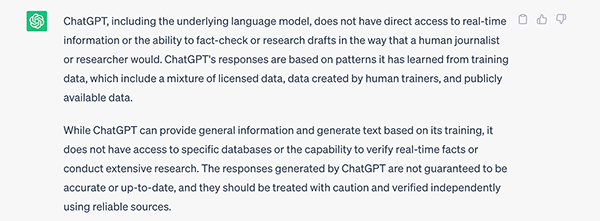 |
||||||||||
|
||||||||||
| There Are Many Paths to a Sustainable Cookieless Future |
 |
| Repeating cycles is a constant trend throughout history, even ad tech history. According to Kristina Prokop, CEO and Co-founder of Eyeota, the ad tech industry is a repeat offender of sensationalizing a trend that disrupts the ecosystem, bolstering solutions that save the day, and inevitably letting these trends die away and fade into obscurity as the industry falls in line with big tech and the walled gardens. As the ecosystem prepares for cookie deprecation, the analytical eye can spot this trend through the string of post-cookie solutions — data clean rooms, alternative IDs, and Seller Defined Audiences. Is this the way to go? The Data Clean Room Debacle: While clean rooms have existed for years, in recent times, the practice has evolved into one of the premier post-cookie solutions.
|
| The countdown clock for the end of the third-party cookie is inching closer to its destination; that’s, of course, if Google does not further extend the deadline. Whether Google extends the deadline, publishers and advertisers must ensure their practices comply with privacy ethics. How the cookie will crumble is up in the air, but Prokop hit the nail on the head about the cycle of industry trends. Only two weeks ago, we questioned the death of consumer tracking. The Ad Tech Trends Circle of Life: The journey is predictable, and the analytical eye can see Prokop’s analysis to be true.
The solution will look different for each company, but experts say that their solutions must address the fact that the digital marketing landscape demands interoperability. Interoperability Standards: The IAB Tech Lab started creating interoperability standards for the industry. They launched the Open Private Join and Activation specifically for Data Clean Room Interoperability.
|
|
| BuzzFeed’s Botatouille is Food for Thought |
 |
| The News: This past Tuesday, BuzzFeed introduced Botatouille, an AI-powered chatbot that will work with its food brand, Tasty. According to its press release, Botatouille will “revolutionize the cooking, meal prep, and shopping experience for Tasty's global community.” Powered by ChatGPT, Botatouille is designed for people who don’t know what they feel like eating. It will suggest dishes based on your mood or the contents of your fridge and even provide recipes if you don't know how to make a western omelet or vegetarian chili. It’s the ultimate app for Gen Zers who want to order out less but never learned to cook. Behind the Scenes: As a new media company, BuzzFeed has quickly embraced innovative technology. It was one of the first publishers to lean into social media, which, ultimately, didn’t deliver the revenue and profits BuzzFeed needed. BuzzFeed News was lost as a result. But that hasn’t stopped the company from trying new things. The company made headlines when it announced in early January that it would deploy AI to create content. “Shifting from a sort of crumbling wave of social to a growing wave of generative AI to me is an exciting transition. And I think there are things we could learn to make sure we capture more enduring value from a technological trend,” founder and CEO of BuzzFeed Jonah Peretti said about the Botatouille announcement. |
| This use of generative AI is an experiment, to be sure, but it is one that is less fraught for publishers. As reported previously in AdMonsters, ChatGPT can’t reference outside sources — correctly or incorrectly — to verify the information it serves up. In fact, ChatGPT is more than willing to warn journalists about its limitations. But as BuzzFeed’s announcement illustrates, it may be premature for publishers to write off generative AI altogether. Its functionality can augment the features of some of the non-news digital products publishers increasingly rely on to augment their subscriber base (think: New York Times Games). While ChatGPT can’t reference outside sources, for use cases like Botatouille, it doesn’t need to. An approach to generative AI, known as the knowledge-base generation, allows brands to use their internal knowledge base — say, the recipes and chef tips — to train the chatbot. The bots' responses will be based on that controlled internal knowledge set. Other disciplines, including prompt engineering, allow brands to put guardrails around AI, preventing nefarious users from finding ways to get branded chatbots to serve up racist and other offensive content. Prompt engineering is a fast-growing AI discipline, with many universities offering it as a field of study. And at a time when many tech companies are laying off workers, people with prompt engineering skills can easily find work. That’s a pretty strong indication that the market will find ways to tame the worst aspects of generative AI, which in turn, will allow it to be pushed out into more public-facing apps and use cases. Will other publishers follow BuzzFeed’s lead? The New York Times once said BuzzFeed dragged media into the digital age. It just may drag it into the generative AI one as well. |
| Around the Water Cooler |
| But wait, there's more... Apple Starts Taxing AI Inventions I'm not sure who appointed Apple the "Mayor of AI Town," but the tech company announced they would start taxing AI inventions. This comes only a week after OpenAI launched their ChatGPT iPhone app, which shot to the top of the charts. Industry experts predict it will cost companies like OpenAI hundreds of millions. (Business Insider) Google Stakes Claim in AI Ads Race Google is taking another big step to make sure they don't fall behind in the generative AI race by using the tech to power its digital advertising tools. The generative AI enhancement will let advertisers input their website into a chatbot, generating copy and image assets. (Wired) Marketers Can Learn From the Rise of AAPI Representation While revenue should not be the sole reason brands target diverse communities and publications, evidence shows that diverse ad spend is profitable. With the AAPI representation rising in the media, brands can learn from creating nuanced, culturally relevant, and authentic campaigns that resonate with the community. (AdWeek) Google's Promise to Stop Climate Lies in Ads Falls Short In 2021, industry regulators called out the tech for monetizing content that denied the existence of climate change and promised to stop placing ads near them. The Center for Countering Digital Hate released a report that found 100 videos viewed 18 million times violated Google's policy. (The New York Times) EU Fines Meta $1.3 Billion Ireland's Data Protection Commission fined Meta $1.3 billion after the tech company's data business breached their privacy regulations. The ruling forced them to halt data sharing between the EU and the U.S. within five months. If they cannot rectify their mistakes, the country will delete a decade's worth of EU user data. (Digiday) |












